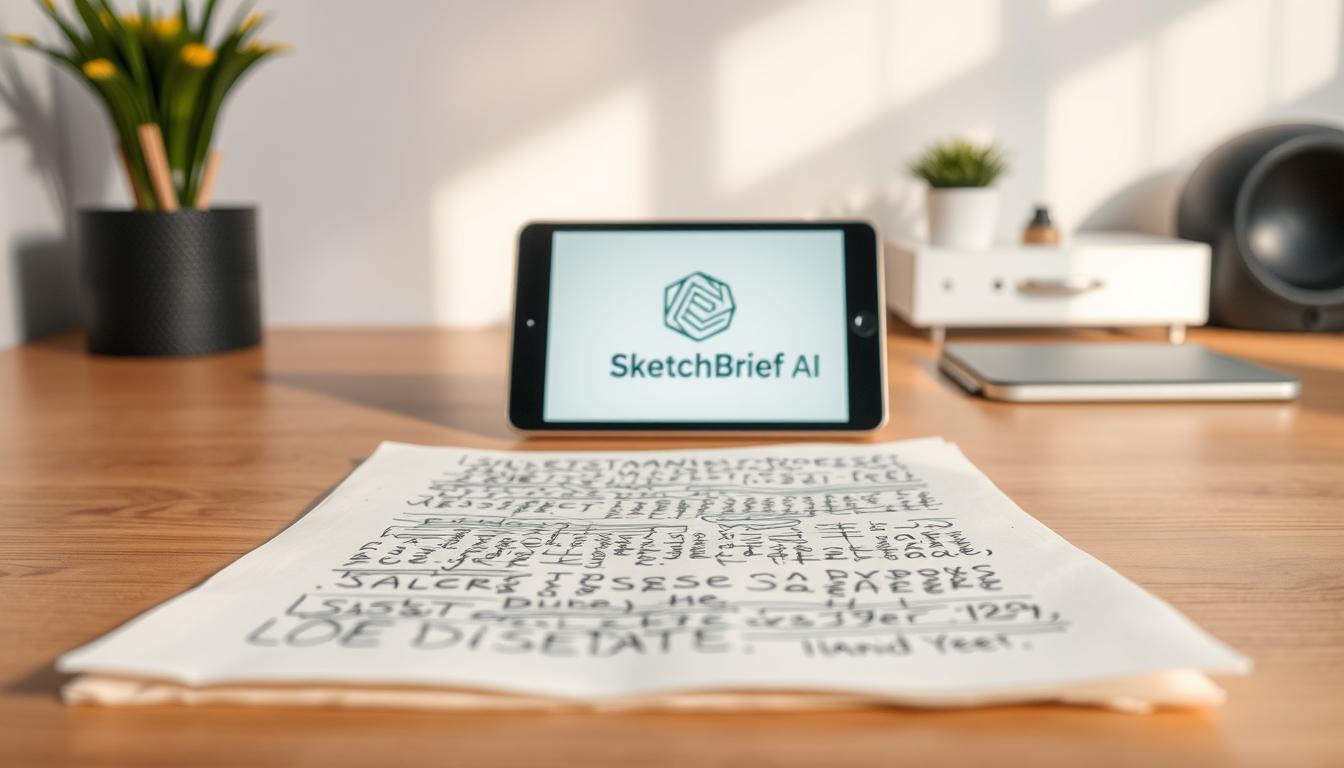Can a smartphone photo and the right OCR cut your weekly data entry by half? We believe it can, and we’ll show how.
We set the stage for moving handwritten forms into usable text and structured data that your team can act on the same day. Modern OCR hits
We compare tools that offer API access, bank-grade encryption, and compliance for HIPAA and GDPR. You’ll learn when a fast process is enough and when you need features like custom extractors or enterprise-level security.
Expect clear guidance on images, validation, and how to keep information accurate while you reclaim precious time. We focus on practical options, capture best practices, and change management steps that help your organization adopt a reliable process with minimal disruption.
Key Takeaways
- OCR and AI workflows can convert handwriting into usable digital text with high accuracy.
- Choose tools based on pages volume, export needs, and compliance requirements.
- Validate captured data to preserve information integrity and formatting.
- API access and encryption matter for enterprise and healthcare use cases.
- Small process changes unlock major time savings for your team.
Why teams in the United States are moving handwritten forms to digital right now
Many U.S. groups now prefer camera-based capture over manual transcription to reclaim staff hours and improve accuracy. We see teams shift away from manual data entry because faster capture reduces errors and speeds compliance reporting.
Handwriting OCR can turn phone images of multi-page documents into structured JSON or exports for Word and Excel. That change cuts repetitive work across departments and makes information available where teams need it most.
There are trade-offs: tools like ChatGPT Vision handle cursive and sloppy notes well, but they often limit uploads and lack API automation. Human validation remains important for critical fields—especially in healthcare and finance where audit trails matter.
- Speed: Reduced turnaround means faster service and less backlog.
- Accuracy: High-throughput OCR lowers rework and improves reporting.
- Options: Choose between web apps, APIs, and export formats that match your organization’s maturity.
How to choose the right handwriting OCR: accuracy, privacy, languages, and workflow fit
An effective OCR selection balances accuracy, privacy, language support, and workflow fit. We recommend a short testing plan: run your toughest pages and compare outputs against known answers.
Optical character recognition accuracy: handwriting styles, cursive, and printed text
Prioritize solutions that report low word error rates—some claim under 1% in lab tests. Test on real samples that include messy notes, cursive, and printed text.
“Measure recognition on your worst pages first — that reveals true accuracy and formatting preservation.”
Security and compliance: HIPAA, GDPR, encryption, and data deletion policies
Confirm bank-grade encryption, HIPAA readiness, and GDPR controls. Look for EU hosting and configurable deletion (default 7-day retention) if your organization needs strict data handling.
Export options and integrations: Word, Excel, API access, and custom extractors
Choose tools with Word and Excel export, robust API access, and custom extractors or prompts at the Enterprise level. That reduces manual cleanup and keeps formatting for audits.
| Need | What to test | Accepted result |
|---|---|---|
| Accuracy | Cursive + printed text samples | WER ≤ 1% |
| Privacy | Encryption, hosting, deletion | HIPAA/GDPR, EU hosting |
| Integration | API, export, custom extractors | Word/Excel export, JSON output |
Best tools to convert handwritten forms to digital: product roundup
Here we review tools that convert page images and camera captures into reliable text and structured data. Use this roundup to match software options with your volume, compliance, and export needs.

Handwriting OCR: high-accuracy recognition and API
Handwriting OCR delivers under 1% word error rates, supports 300+ languages, and offers bank-grade encryption. Exports include Word and Excel, plus API access and custom extractors for enterprise workflows.
ChatGPT Vision workflow
ChatGPT Vision converts cellphone images into structured JSON. It handles cursive well but needs manual uploads and human validation for critical fields. Best for rapid, schema-based extraction when you can proofread results.
Transkribus for archives
Transkribus targets historical transcription. It’s ideal for letters, diaries, and research notes. Try it free to enrich and annotate archives with high-quality transcription tools.
Combining OCR with parsing
Pair OCR with parsing software to map fields, normalize values, and reduce manual cleanup. This process speeds integration with CRMs, gradebooks, or research databases.
| Tool | Best for | Key features |
|---|---|---|
| Handwriting OCR | High-volume operations | API, |
| ChatGPT Vision | Quick schema extraction | JSON output, handles cursive, manual uploads |
| Transkribus | Archives & research | Historical transcription, annotations, free trial |
Handwriting OCR at a glance: accuracy, speed, and enterprise features
Quick comparison: what accuracy, speed, and enterprise features actually mean for your workflows.
Unparalleled accuracy and formatting: Expect word error rates under 1% and preserved formatting for clean exports. This level of accuracy keeps fields intact and reduces manual cleanup when exporting text and tables.
Privacy-first architecture
Security matters: bank-grade encryption, HIPAA/BAA support, and GDPR controls with optional EU hosting. The platform does not train models on your data and uses configurable deletion windows (default 7 days).
Pricing and plans
Choose from pay-as-you-go ($15/100 pages) or subscriptions: Starter $19/mo (250 credits), Business $59/mo (1,000 credits), Enterprise $499/mo (10,000 credits). Annual discounts up to 70% and custom bulk pricing are available. Cost per page falls as volume rises.
“High accuracy and strong privacy let teams scale recognition without sacrificing compliance.”
- Support for 300+ languages and multiple languages in a single batch.
- Word/Excel export, API access, and custom extractors for automated pipelines.
- File formats: PDF, JPG, PNG, TIFF (multi-page PDF/TIFF recommended).
ChatGPT Vision for handwritten forms to digital: practical workflow and limitations
When you need quick schema-based extraction, Vision offers a practical path from image capture to usable output. We’ve tested it on mixed cursive and printed pages and found it can return structured JSON that matches a provided schema.
Start with a JSON schema that defines field names, types, and nesting. That standardizes data entry and reduces manual cleanup.
Understand constraints
Vision reads cursive and printed handwriting well, but it has limits: manual web uploads, four images per request, and no API for automation. In one test it misread a digit (7 vs 1) and omitted a field, so expect a validation step.
Validation loop
- Upload images in batches of four pages, then append remaining pages and ask the model to update the JSON.
- Proofread for misread numbers, names, and addresses; correct and export.
- Use prompts that mirror your labels to improve field matching.
Options include using Vision for pilots or backlogs and combining it with OCR tools when you need API automation or higher throughput.
“Keep the process simple: upload, extract text, validate, and export.”
Transkribus for historical documents: from letters and diaries to searchable text
Transkribus turns old manuscripts and family letters into searchable, research-ready text. It focuses on accurate transcription and enrichment for archival work. The platform handles fragile pages and faded ink with tools built for research.

Use cases: historical researchers, genealogists, and archives
We recommend Transkribus for archives, libraries, and genealogists who manage handwritten documents and notes. Its recognition models favor older handwriting and varied scripts.
Getting started: try it free and enrich documents with annotations
Start with a free trial and upload a few tough pages. Use annotation features to attach metadata and preserve provenance for each page.
- Ideal users: archives, libraries, researchers, and genealogists.
- Strength: high-quality transcription that converts historical pages into searchable text and data.
- Features: annotation, multi-language support, and export for research tools and citation.
- Workflow tip: Combine Transkribus with operational OCR tools when you need both research-grade outputs and high throughput.
“Try it free on your toughest samples — Transkribus often yields better results for old scripts than generic OCR.”
Pricing, volumes, and ROI: saving time on manual data entry
A clear cost-per-page model helps you forecast savings and justify automation investments.
Start by comparing per-page rates with the hourly wage of staff who do manual data entry. Batch processing reduces overhead and drives down effective cost per document.
Example pricing: pay-as-you-go $0.15/page; Starter $19/month (250 credits, then $0.08/page); Business $59/month (1,000 credits, then $0.06/page); Enterprise $499/month (10,000 credits, then $0.05/page). Annual discounts and bulk pricing are available. API access is included across plans; custom prompts and offline deployment are offered at higher tiers.
Cost per page versus time saved: batch processing and throughput
Run a small pilot, measure minutes saved per record, and multiply by volume. Batch processing boosts throughput and lowers the per-page labor cost you eliminate.
When to upgrade: API access, custom prompts, and offline deployment needs
Upgrade when you need automation, predictable SLAs, or governance features. Enterprise plans add custom prompts, advanced export options, and deployment choices that support audits and long-term budgeting.
Tip: Build a simple model—capture, extract, validate, export—and track time saved and quality metrics before scaling.
| Metric | Starter | Business | Enterprise |
|---|---|---|---|
| Base monthly | $19 | $59 | $499 |
| Credits / pages | 250 (then $0.08/page) | 1,000 (then $0.06/page) | 10,000 (then $0.05/page) |
| Best for | Small pilots, low volume | Growing teams, regular batches | High volume, governance, offline needs |
| Key features | API access, basic export | Faster throughput, bulk pricing | Custom prompts, advanced export, offline deploy |
- Estimate ROI by comparing per-page costs against actual staff minutes saved on manual data tasks.
- Mix plans and bulk pricing for seasonal spikes and backlog clearance.
- Consider software speed, support, and export formats when projecting total cost of ownership.
Implementation checklist: from images to structured digital text
A clear implementation path keeps images, schema, and security aligned for fast, repeatable results.
Capture quality
Start with consistent capture. Scan at 300 dpi or higher and use even lighting for photos. Prefer multi-page PDF or TIFF for throughput.
- Supported file formats: PDF, JPG, PNG, GIF, HEIC, TIFF.
- Prep files: flatten pages, keep clear order, and use descriptive filenames.
Set your schema
Define field names, data types, and normalization rules before you run extraction. That reduces cleanup and keeps formatting consistent.
| Field | Type | Normalization |
|---|---|---|
| Name | string | Title case |
| Date | date | YYYY-MM-DD |
| Amount | decimal | Two decimals |
Run, review, and export
Run OCR, then review critical fields for accuracy. Correct mistakes before export. Use Word for narrative text and Excel for tabular data that feeds downstream systems.
Secure handling
Lock the pipeline: enable bank-grade encryption, BAAs where needed, and GDPR controls with optional EU hosting.
“Set a short retention window and clear deletion policy to reduce risk.”
- Default deletion: configurable 7-day window; no training on customer data.
- Access control: role-based permissions and audit logs.
- Automate handoffs with APIs and custom extractors where available.
Conclusion
A short pilot proves modern recognition workflows cut manual data entry and lift accuracy. Handwriting OCR now delivers sub-1% word error rates, wide language support, exports for Word and Excel, API access, and enterprise security.
Choose based on goals: high-accuracy automation, schema-driven extraction via ChatGPT Vision, or research-grade transcription with Transkribus. Standardize capture, set a schema, and run validation loops for consistent character recognition across handwriting styles and printed text.
Plan for privacy and governance—encryption, deletion windows, and role controls—then scale with custom extractors and bulk pricing. Start small, measure time saved, and expand as your organization converts documents and notes into reliable, actionable data and text.

Leave a Reply